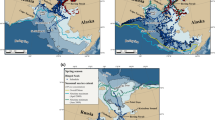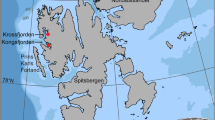Abstract
The underwater behaviour of 11 belugas or white whales was examined during summer using time-at-depth records relayed by satellite-linked data-loggers. Simultaneous tracking information was obtained for each whale. Eight distinct dive profiles were identified in submergences made to depths of >40 m. Four of these, together comprising 84% of these “deep” dives, were of a square profile. They were characterised by a continuous descent to a particular depth (usually the sea bed), a “bottom phase” at or near that depth, and a direct ascent to the surface. These dives are presumed to be made for benthic foraging. Other, much less common, dive shapes were “V”-shaped, parabolic and trapezoidal. “Shallow” dives (15–40 m depth) were of a variety of shapes, short duration and high average horizontal speeds. Many probably occurred during periods of directed travel. This population of belugas treats most of the water column as dead space separating resources of oxygen and nutrition.
Similar content being viewed by others
Author information
Authors and Affiliations
Additional information
Received: 8 January 1998 / Accepted: 27 April 1998
Rights and permissions
About this article
Cite this article
Martin, A., Smith, T. & Cox, O. Dive form and function in belugas Delphinapterus leucas of the eastern Canadian High Arctic. Polar Biol 20, 218–228 (1998). https://doi.org/10.1007/s003000050299
Issue Date:
DOI: https://doi.org/10.1007/s003000050299




